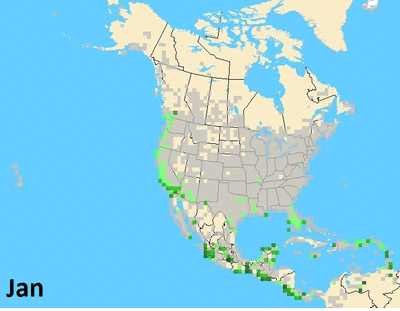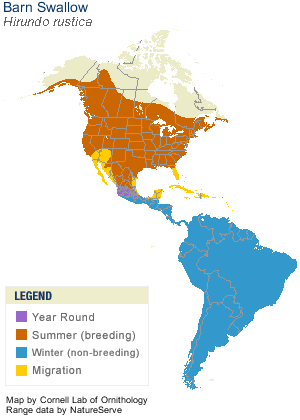 |
| Barn Swallow perched on phragmites - Farmington Utah, June 2011 |
Since my early childhood, the Barn Swallow has been for me one of the most recognizable and beloved of the migrating birds. That elegant forked tail - the reason we even say "swallow-tail" to describe other birds and other things. The iridescent blue back and rufous breast. The way large numbers of them weave through the sky snatching gnats on the wing and then darting under bridges and over water. All this was plenty to catch the attention of a curious child.
As a boy growing up in Nampa, Idaho, we had an irrigation ditch that ran right next to our home; the Phyllis Canal. In the off-irrigation season, we'd dig in the sandy bottom of the empty canal and find hundreds of golf balls - casualties of the local hackers, but veritable treasures for the young boys of the neighborhood. In the summer, we'd float the canal on inner tubes. As the canal meandered all through the town it would pass under several bridges. Usually the bridge was just high enough above the water that we could safely pass under it on our tubes. There, under those bridges, is where I had my first up-close experiences seeing Barn Swallow nests, eggs, and chicks. I also remember finding injured or genetically deficient young swallows occasionally in our yard and in each case trying unsuccessfully to nurse them back to health. Early and meaningful lessons in the circle of life.
 |
| Barn Swallow on a wooden post - Boise foothills, Idaho |
 |
| Barn Swallow in a barn (imagine that!) - Garr Ranch, Antelope Island, Utah |
Hirundo Rustica (Latin for country swallow or rustic swallow) is found pretty much all over the world - see eBird world range map. See below for another animated eBird map based on our collective sightings of the Barn Swallow in North and Central America, as well as the range map from Cornell. Of particular interest to me are the winter ranges along the west coast and in Florida.
 |  |
My curiosity led me to look at Barn Swallow migration patterns in the western United States. Take a look at the map below, where I pasted the eBird histograms for each western state. I think it shows some pretty cool information. The animated map above shows month-by-month data, but the histograms below show it week-by-week. I hope one day that eBird might also have the ability to map sightings week-by-week. (Is that too much to ask of a free service?!)
In Utah, I can expect to see my first Barn Swallows in the 3rd or 4th week of March and they are gone again by the 3rd week of November. When I lived in Idaho, their seasonal tenure was a bit shorter; arriving in the first week of April and gone by the end of October, but Montana and Wyoming both have Barn Swallows for even less time. While in Arizona, it is possible to see them all year round, except for those first two weeks of February.
 |
| Barn Swallow among the phrags and cattails - Farmington, Utah |



Great birds. They protect the garden and don't eat my berries.
ReplyDelete...I love these beautiful birds too. These are one of the first birds I drew seriously when I was a little girl. He was the "new guy" in a story I wrote about birds. I wish I still had that book! :-D
ReplyDeleteYou always amaze me with your ability to pull all of this data out of eBird and present it in such a meaningful way! Love the photos and the info. It's always fun when I see something like this to think that my data led to this data because some of my sightings of barn swallows were in AZ when I lived there! This is so COOL!
ReplyDelete